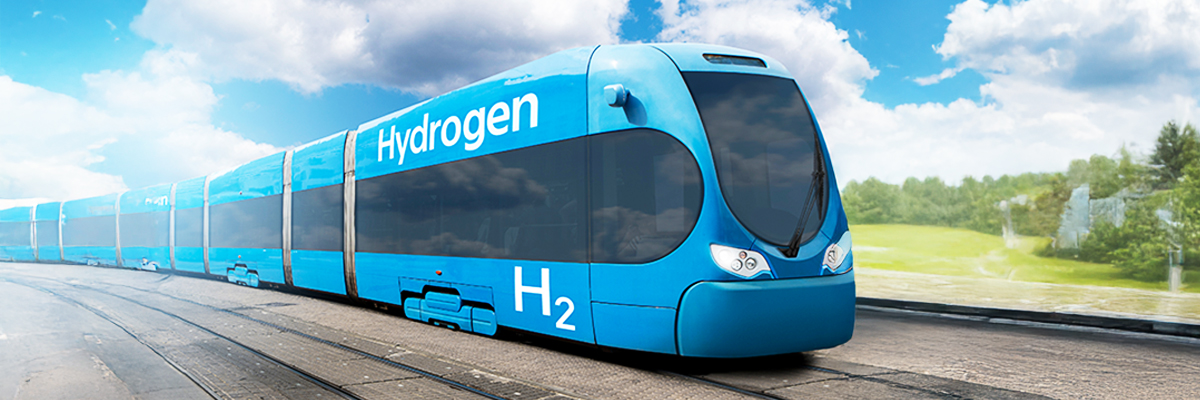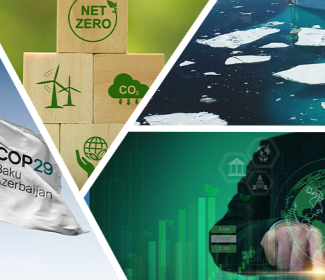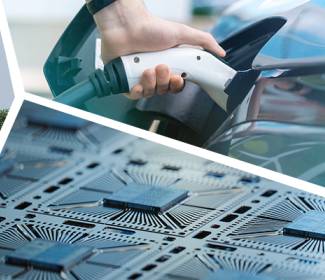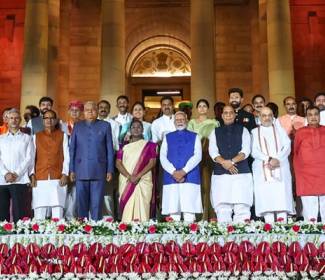The future of transportation may well lie in the very elements that fuel the stars. A visual demonstration of this technology was given by a historical event - the Apollo 11 mission. While the first stage of the rocket was powered by kerosene, hydrogen fuel carried the astronauts all the way to the moon.
This switch from kerosene to hydrogen even shows up visually, with the hydrogen flame burning much cleaner than the kerosene flame. Just as hydrogen-powered space exploration is now directed towards revolutionising transportation on Earth, particularly in India.
The most remarkable quality of hydrogen as an energy source is that it is virtually limitless, offering endless opportunities to decarbonise industries worldwide. Hydrogen being one of the most abundant elements on Earth hence could be the key to solving the energy and climate crises that threaten our future.
Green hydrogen is truly sustainable and an actual gamechanger in the global energy landscape. Unlike grey hydrogen that is produced using natural gas or blue hydrogen that uses fossil fuels with carbon capture, green hydrogen is created through electrolysis of water that is powered exclusively by renewable energy sources like solar or wind energy.
The emission of greenhouse house gases in the production of green hydrogen is hence cut down to zero per cent, making it the only true sustainable option in the hydrogen spectrum.
It is predicted that by 2050, the global energy demand will increase by almost 18%. In this scenario, green hydrogen offers a sustainable, renewable and versatile alternative to fossil fuels. This could help industries ranging from heavy manufacturing to transport by providing a cleaner path to meet their high energy requirements while reducing emissions.
India has recognised the potential of green hydrogen and is now advocating its use globally. With one of the world’s largest and fastest-growing economies, India has started to integrate renewable energy into its strategy for a sustainable future.
Central to India’s energy security is the National Green Hydrogen Mission, backed by a INR 19,744 crore investment, to create a green hydrogen production capacity of at least 5 MMT per annum.
Green trains on track
Indian Railways, the backbone of transportation in the country is at the heart of this transformation. India has one of the world’s largest rail networks with operating daily over 11,000 trains every day, of which 7,000 are passenger trains, carrying about 13 million passengers. This makes Indian Railways a major consumer of fossil fuels and a significant contributor to emissions. Considering the huge dependency on railways, in a bold move towards sustainability, India has taken an ambitious step to include green hydrogen to achieve the goal of net-zero emission by 2030.
The Indian Railways’ hydrogen-powered train trails are all set to place the country in the forefront of global efforts towards the decarbonisation of rail transport. The first major step in this direction came in February 2023, with the announcement of the "Hydrogen for Heritage" initiative by Union Railway Minister Ashwini Vaishnaw. This programme will see 35 hydrogen trains running on heritage and hill routes, with each train costing INR 80 crore and additional ground infrastructure costs of INR 70 crore per route.
India’s commitment to this green hydrogen revolution is both timely and ambitious. If successful, the transition to hydrogen-powered trains will not only help Indian Railways meet its net-zero emissions target but will also set a global benchmark for how developing economies can lead the way in the green energy transition. This is not just about theoretical potential; it is about transforming the way the world moves, starting with the heart of India’s transportation network.
As India’s green hydrogen vision gathers momentum, it promises to move beyond the confines of a middle-school chemistry experiment and become a reality, one that drives sustainability on rails—and across the country. At first glance, both electric and hydrogen trains are emissions-free. However, electric trains depend on power generated from external sources, which, if not renewable, still contribute to carbon emissions.
In contrast, hydrogen offers several distinct advantages as a fuel for the next generation of trains. A study on the hydrogen fuel cell electric trains highlights hydrogen’s superior energy density, versatility—it can be used either in combustion engines or converted into electricity via fuel cells—and relatively lower upfront infrastructure investment compared to electrified rail systems.
Transformation of existing trains
The most exciting aspect of these plans is the modification of existing Diesel Electric Multiple Units (DEMUs) into hydrogen fuel-cell-powered trains. DEMUs are trains where each carriage is powered by its own diesel engine and generator thereby eliminating the need for a separate locomotive.
This design makes them faster, more flexible and ideal for regional routes. Retrofitting these trains with hydrogen fuel cells replaces their diesel engines with clean energy technology, transforming them into zero-emissions alternatives.
A pilot project on the Jind–Sonipat section of Northern Railway aims to convert a 1200 KW DEMU into a hydrogen fuel-cell-based Distributed Power Rolling Stock (DPRS), producing zero emissions. The hydrogen for these trains will be produced at a new hydrogen production and refuelling station in Jind, Haryana, using a one-megawatt Polymer Electrolyte Membrane (PEM) electrolyser. This setup will produce approximately 430 kg of hydrogen per day, meeting the International Organization for Standardization (ISO) 14687 purity standards required for fuel cell applications. The refuelling station will also have a 3,000 kg hydrogen storage system and a high-pressure compressor to ensure efficient and rapid refuelling.
The pilot project involves converting DEMU into Hydrogen Fuel Cell Distributed Power Cars (DPCs). A Hydrogen Fuel Cell Distributed Power Car (DPC) represents a shift in train propulsion, where power is no longer concentrated in a single unit but strategically spread across multiple carriages. Each DPC is equipped with hydrogen fuel cells, onboard storage tanks, and supporting systems to generate electricity for movement. This distributed power setup enhances overall efficiency, ensuring a more balanced weight distribution and improving train performance.
These comprehensive efforts place India firmly on the global stage, set to become only the fifth country to operate hydrogen-powered trains after Germany, France, Sweden and China.
However, these pilot projects mark significant progress, they also highlight the challenges of scaling up the present technology. The rail industry which saw the launch of the world’s first railway line in 1825 was then powered by coal.
This then witnessed a dramatic evolution when coal was replaced by diesel and electric trains. But now the focus is shifting again towards hydrogen and electricity. This shift is making us question the relative merits of electric versus hydrogen-powered trains. While electric trains are already running across the globe, hydrogen offers a unique advantage, especially for long-route trains in places where electrification infrastructure may be limited.
Hydrogen fuel cells are more flexible to operate without the need of costly rail electrification, a major hurdle in some regions. But it is further important to consider that the development of hydrogen infrastructure, including electrolysers and refuelling stations shall require significant investment and time to be fully functional nationwide.
The large-scale deployment of hydrogen-powered trains will also require an overhaul of infrastructure to safely transport, store and deploy hydrogen. Given that hydrogen is volatile and highly explosive, stringent safety protocols will be essential throughout the supply chain.
Nevertheless, there is no denying the fact that the long-term benefits of hydrogen-powered trains can indeed be transformative as there will be lower emissions, reduced dependency on fuel and a cleaner and more sustainable rail transport.
In future, as green hydrogen technology shall advance, a decrease in the price and a more efficient infrastructure are expected. This will make the technology more accessible and motivate its adoption in varied sectors that are currently cost-prohibitive.
Also, a wider distribution network shall allow the use of hydrogen at scale and it can be expected that the entire Indian Railways network shall one day function on hydrogen fuels. Looking ahead, India’s green hydrogen journey holds the potential to be a model for the world. This bold step towards a sustainable future shall inspire others to follow suit, making a long-lasting impact on the global quest towards cleaner and greener energy. India’s vision of hydrogen-powered trains hence is not just a step, but it is a giant leap towards a sustainable and decarbonised world.
This blog is written by Aashee Sharma
- https://www.mckinsey.com/industries/energy-and-materials/our-insights/global-energy-perspective
- https://www.pib.gov.in/PressReleasePage.aspx?PRID=1889967
- https://indianrailways.gov.in/railwayboard/view_section.jsp?lang=0&id=0,1
- https://pib.gov.in/PressReleasePage.aspx?PRID=1896102
- https://www.sciencedirect.com/science/article/pii/S2666352X24000104#keys0001
- https://x.com/ashwinivaishnaw/status/1877400024348340696?s=48&t=ZFiN2X8lLb_bGoaBwIp8zg
- https://ddnews.gov.in/en/charting-a-green-course-hydrogen-fuelled-trains-in-india/
- https://ddnews.gov.in/en/charting-a-green-course-hydrogen-fuelled-trains-in-india/





